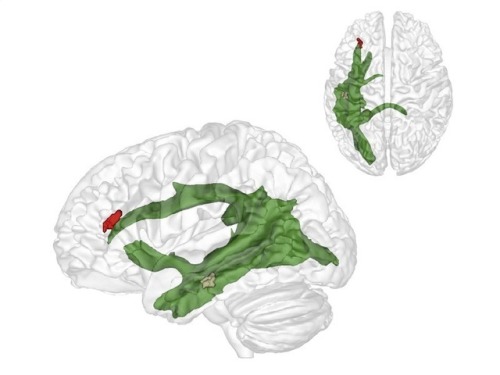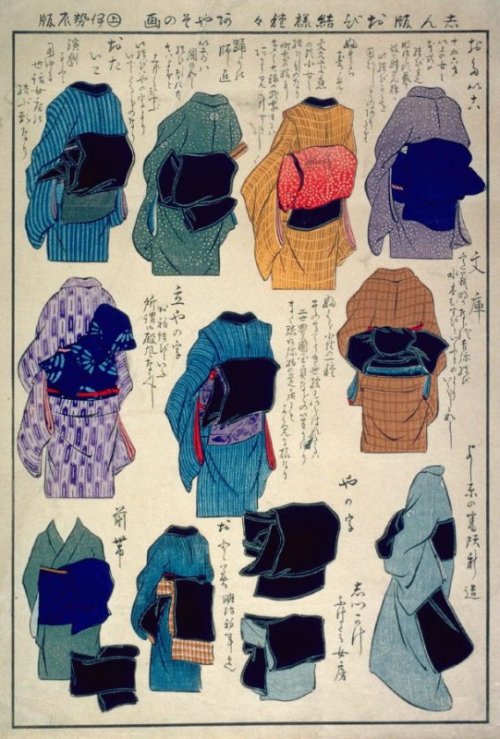1.朝顔売り




1.朝顔売り
2.西瓜売り
3.風鈴売り
4.金魚売り
More Posts from Philosophical-amoeba and Others
I read once that shortly before The Merchant Of Venice was written, Queen Elizabeths doctor (who was Jewish) tried to poison her; is that true?
Sort of.
There was a doctor accused of trying to poison Queen Elizabeth. His name was Roderigo Lopez. He was Jewish and of Spanish descent and was fairly well off. He was accused of trying to poison her and conspiring against her with Spanish officials. I believe he is the only English physician to have been executed.
HOWEVER, we don’t know if he actually wanted to poison her. There was no attempt I believe, just accusations. He stated before he died that he “loved the Queen as much as he loved Jesus Christ” which can (and was) be interpreted in many ways. Some people think the Queen thought he was innocent because she took a long time to sign his death warrant. The character may have been the inspiration for Shylock in the Merchant of Venice, since they are both considered villains and evil because they’re Jewish but no one is 100% sure. Based on what I’ve heard, I don’t think he actually wanted to poison the queen and was probably just a target of antisemitism and maybe anti Spanish sentiment but who knows.
Thanks for bringing this up! I’m sure people would love to read about it. I’ve put the Wikipedia article below:
https://en.wikipedia.org/wiki/Roderigo_Lopez#Royal_physician
-Admin @thesunofyork

Useless Indonesian Chiken facts: Ayam Cemani
Hi tumblr, meet one of the most expensive chiken In the world from Indonesia; Ayam Cemani
No we not paint it black with our excessive coal resources
It simply have unique genes that makes it whole body, meat and even organs all black
It’s chiken so yeah you can eat it, and it said to be very delicous. thou all these years living in Indonesia, I never actually tried it to tell you how it taste
I mean.. It cost up to Rp. 100 Million or about 10.000 USD for one of this chiken…so…..
The extravagant price mostly come from myths that surround these beautiful chiken. said it’ll bring you luck, health and every benefits you can imagine people would said about this emo chiken
pic sc: err…Internet
- J -
A Cry for Help.
I seek the Word of @cranquis and the Word of @wayfaringmd on proper tick removal technique. Where I live we’re being warned that populations will be high this summer and that 50% of the ticks are testing positive for Lyme disease. Between the cat, the dog, and three kids I know I’m going to have to deal with them soon.
I’m hearing so many conflicting things, even from MDs. Burn them with a match? Pour olive oil on them? I thought we weren’t supposed to do that stuff? Should I buy that fancy tick remover thing? Or does each one require a trip to the office? Help me Crayfaring, you’re my only hope! 😩

Book Lovers Day - Free Aeronautics e-Books from NASA

Quieting the Boom

The Shaped Sonic Boom Demonstrator and the Quest for Quiet Supersonic Flight.
Download it HERE
Elegance in Flight

A comprehensive History of the F-16XL Experimental Prototype and its Role in our Flight Research.
Download it HERE
Probing the Sky

Selected National Advisory Committee for Aeronautics (NACA) Research Airplanes and Their Contributions to Flight.
Download it HERE
Cave of the Winds

The huge Langley Full-Scale Tunnel building dominated the skyline of Langley Air Force Base for 81 years (1930–2011). Explore how the results of critical tests conducted within its massive test section contributed to many of the Nation’s most important aeronautics and space programs.
Download it HERE
A New Twist in Flight Research

A New Twist in Flight Research describes the origins and design development of aeroelastic wing technology, its application to research aircraft, the flight-test program, and follow-on research and future applications.
Download it HERE
Sweeping Forward

Developing & Flight Testing the Grumman X-29A Forward Swept Wing Research Aircraft.
Download it HERE
Thinking Obliquely

Robert T. Jones, the Oblique Wing, our AD-1 Demonstrator, and its Legacy.
Download it HERE
The Apollo of Aeronautics

The fuel crisis of the 1970s threatened not only the airline industry but also the future of American prosperity itself. It also served as the genesis of technological ingenuity and innovation from a group of scientists and engineers at NASA, who initiated planning exercises to explore new fuel-saving technologies.
Download it HERE
X-15: Extending the Frontiers of Flight

X-15: Extending the Frontiers of Flight describes the genesis of the program, the design and construction of the aircraft, years of research flights and the experiments that flew aboard them.
Download it HERE
Ikhana

Delve into the story of the Ikhana, a remotely piloted vehicle used by NASA researchers to conduct Earth science research, which became an unexpected flying and imaging helper to emergency workers battling California wildfires.
Download it HERE
NASA’s Contributions to Aeronautics, Volume 1

This first volume in a two-volume set includes case studies and essays on NACA-NASA research for contributions such as high-speed wing design, the area rule, rotary-wing aerodynamics research, sonic boom mitigation, hypersonic design, computational fluid dynamics, electronic flight control and environmentally friendly aircraft technology.
Download it HERE
NASA’s Contributions to Aeronautics, Volume 2

Continue your journey into the world of NASA’s Contributions to Aeronautics with case studies and essays on NACA-NASA research for contributions including wind shear and lightning research, flight operations, human factors, wind tunnels, composite structures, general aviation aircraft safety, supersonic cruise aircraft research and atmospheric icing.
Download it HERE
Interested in other free e-books on topics from space, science, research and more? Discover the other e-books HERE.
Make sure to follow us on Tumblr for your regular dose of space: http://nasa.tumblr.com

(Image caption: The maturation of fibres of a brain structure called the arcuate fascicle (green) between the ages of three and four years establishes a connection between two critical brain regions: a region (brown) at the back of the temporal lobe that supports adults thinking about others and their thoughts, and a region (red) in the frontal lobe that is involved in keeping things at different levels of abstraction and, therefore, helps us to understand what the real world is and what the thoughts of others are. Credit: © MPI CBS)
The importance of relating to others: why we only learn to understand other people after the age of four
When we are around four years old we suddenly start to understand that other people think and that their view of the world is often different from our own. Researchers in Leiden and Leipzig have explored how that works. Publication in Nature Communications on 21 March.
At around the age of four we suddenly do what three-year-olds are unable to do: put ourselves in someone else’s shoes. Researchers at the Max Planck Institute for Human Cognitive and Brain Sciences (MPI CBS) in Leipzig and at Leiden University have shown how this enormous developmental step occurs: a critical fibre connection in the brain matures. Senior researcher and Leiden developmental psychologist Nikolaus Steinbeis, co-author of the article, took part in the research. Lead author, PhD candidate Charlotte Grosse-Wiesmann, worked under his supervision.
Little Maxi
If you tell a 3-year-old child the following story of little Maxi, they will most probably not understand: Maxi puts his chocolate on the kitchen table, then goes to play outside. While he is gone, his mother puts the chocolate in the cupboard. Where will Maxi look for his chocolate when he comes back? A 3-year-old child will not understand why Maxi would be surprised not to find the chocolate on the table where he left it. It is only by the age of 4 years that a child will correctly predict that Maxi will look for his chocolate where he left it and not in the cupboard where it is now.
Theory of Mind
The researchers observed something similar when they showed a 3-year-old child a chocolate box that contained pencils instead of chocolates. When the child was asked what another child would expect to be in the box, they answered “pencils”, although the other child would not know this. Only a year later, around the age of four years, however, will they understand that the other child had hoped for chocolates. Thus, there is a crucial developmental breakthrough between three and four years: this is when we start to attribute thoughts and beliefs to others and to understand that their beliefs can be different from ours. Before that age, thoughts don’t seem to exist independently of what we see and know about the world. That is, this is when we develop a Theory of Mind.
Independent development
The researchers have now discovered what is behind this breakthrough. The maturation of fibres of a brain structure called the arcuate fascicle between the ages of three and four years establishes a connection between two critical brain regions: a region at the back of the temporal lobe that supports adult thinking about others and their thoughts, and a region in the frontal lobe that is involved in keeping things at different levels of abstraction and, therefore, helps us to understand what the real world is and what the thoughts of others are. Only when these two brain regions are connected through the arcuate fascicle can children start to understand what other people think. This is what allows us to predict where Maxi will look for his chocolate. Interestingly, this new connection in the brain supports this ability independently of other cognitive abilities, such as intelligence, language ability or impulse control.






Dress for the job you want.
Yoshiie Ason yoroi chakuyōzu 義家朝臣鎧着用次第 by Sadatake Ise is a pictorial work on how to put on Japanese Samurai armor. The subject is famed Samurai warrior Minamoto No Yoshiie.
Find more amazing rare books we’ve recently digitized from our Freer | Sackler branch library in our book collection, Japanese Illustrated Books from the Edo and Meiji Period.

Sleep suppresses brain rebalancing
Why humans and other animals sleep is one of the remaining deep mysteries of physiology. One prominent theory in neuroscience is that sleep is when the brain replays memories “offline” to better encode them (“memory consolidation”). A prominent and competing theory is that sleep is important for re-balancing activity in brain networks that have been perturbed during learning while awake. Such “rebalancing” of brain activity involves homeostatic plasticity mechanisms that were first discovered at Brandeis University, and have been thoroughly studied by a number of Brandeis labs including the Turrigiano lab. Now, a study from the Turrigiano lab just published in the journal Cell shows that these homeostatic mechanisms are indeed gated by sleep and wake, but in the opposite direction from that theorized previously: homeostatic brain rebalancing occurs exclusively when animals are awake, and is suppressed by sleep. These findings raise the intriguing possibility that different forms of brain plasticity – for example those involved in memory consolidation and those involved in homeostatic rebalancing – must be temporally segregated from each other to prevent interference.
The requirement that neurons carefully maintain an average firing rate, much like the thermostat in a house senses and maintains temperature, has long been suggested by computational work. Without homeostatic (“thermostat-like”) control of firing rates, models of neural networks cannot learn and drift into states of epilepsy-like saturation or complete quiescence. Much of the work in discovering and describing candidate mechanisms continues to be conducted at Brandeis. In 2013, the Turrigiano Lab provided the first in vivo evidence for firing rate homeostasis in the mammalian brain: lab members recorded the activity of individual neurons in the visual cortex of freely behaving rat pups for 8h per day across a nine-day period during which vision through one eye was occluded. The activity of neurons initially dropped, but over the next 4 days, firing rates came back to basal levels despite the visual occlusion. In essence, these experiments confirmed what had long been suspected – the activity of neurons in intact brains is indeed homeostatically governed.
Due to the unique opportunity to study a fundamental mechanism of brain plasticity in an unrestrained animal, the lab has been probing the possibility of an intersection between an animal’s behavior and homeostatic plasticity. In order to truly evaluate possible circadian and behavioral influences on neuronal homeostasis, it was necessary to capture the entire 9-day experiment, rather than evaluate snapshots of each day. For this work, the Turrigiano Lab had to find creative computational solutions to recording many terabytes of data necessary to follow the activity of single neurons without interruption for more than 200 hours. Ultimately, these data revealed that the homeostatic regulation of neuronal activity in the cortex is gated by sleep and wake states. In a surprising and unpredicted twist, the homeostatic recovery of activity occurred almost exclusively during periods of activity and was inhibited during sleep. Prior predictions either assumed no role for behavioral state, or that sleeping would account for homeostasis. Finally, the lab established evidence for a causal role for active waking by artificially enhancing natural waking periods during the homeostatic rebound. When animals were kept awake, homeostatic plasticity was further enhanced.
This finding opens doors onto a new field of understanding the behavioral, environmental, and circadian influences on homeostatic plasticity mechanisms in the brain. Some of the key questions that immediately beg to be answered include:
What it is about sleep that precludes the expression of homeostatic plasticity?
How is it possible that mechanisms requiring complex patterns of transcription, translation, trafficking, and modification can be modulated on the short timescales of behavioral state-transitions in rodents?
And finally, how generalizable is this finding? As homeostasis is bidirectional, does a shift in the opposite direction similarly require wake or does the change in sign allow for new rules in expression?
Molecule of the Day - DDT


Dichlorodiphenyltrichloroethane (C14H9Cl5), more commonly known as DDT, is a colourless, tasteless solid under room conditions. It was used as an insecticide during the 1940s-1970s, and gained notoriety after Rachel Carson’s 1962 book, Silent Spring, which highlighted the health and environmental effects of DDT.

DDT acts by binding to voltage-gated sodium ion channels of neurons (as seen on the left of the diagram below), causing these channels to be permanently open instead of opening only upon the arrival of an action potential. Consequently, there is a continuous influx of Na+ ions into the neuron, which triggers a series of rapid action potentials and hence neuronal impulses. This leads to rapid muscle contractions, spasms, and death.

While this effect does not occur in humans and other non-insects, it is still moderately toxic, and as been shown to be an endocrine disruptor. Therefore, chronic exposure to it can lead to tumour formation, developmental problems, and birth defects. DDT is also considered to be a possible carcinogen.
Due to the hydrophobicity of DDT, it tends to accumulate in the lipids of living organisms rather than in the environment. This results in biomagnification, in which its concentration increases upon going up the food chain, as each organism of a rung of the chain consumes multiple prey. Consequently, the usage of DDT affected the populations of many birds of prey, such as the bald eagle.

In 1962, Rachel Carson published the book Silent Spring, which highlighted the negative effects of the usage of DDT and other pesticides on the environment and biodiversity. This book was revolutionary; it sparked a heated debate on pesticides and contributed to the 1972 US ban on DDT. The world followed suit; most countries around the world now prohibit the use of DDT, except for limited disease vector control purposes, such as for malaria.

DDT is synthesised by the condensation of a molecule of chloral and 2 molecules of chlorobenzene via an electrophilic substitution reaction, producing water as a by-product.



On this day, 13th February 1743, Sir Joseph Banks was born.
Sir Joseph Banks was a British botanist and naturalist who sailed with Captain James Cook on the Endeavour voyage of 1770.
Joseph Banks was born on 13 February 1743 in London. His passion for botany began at school. From 1760 to 1763 he studied at Oxford University, during which time he inherited a considerable fortune. In 1766, Banks travelled to Newfoundland and Labrador, collecting plant and other specimens. The same year he was elected a fellow of the Royal Society.
In 1768, he joined the Society’s expedition, led by Captain James Cook, to explore the uncharted lands of the South Pacific. The expedition circumnavigated the globe and visited South America, Tahiti, New Zealand, Australia and Java. Banks collected an enormous number of specimens on the way and, on his return, his scientific account of the voyage and its discoveries sparked considerable interest across Europe.
The journal kept by the then 25-year-old Joseph Banks on board HMS Endeavour is one of the State Library’s most significant manuscripts. It records the first Pacific voyage of Captain James Cook from 1768 to 1771. Following the Endeavour’s return to England in 1771, Banks was hailed as a hero.
The State Library’s Sir Joseph Banks collection includes correspondence, reports, invoices, accounts, maps and watercolour drawings which document the far reaching influence of Banks on the colony. This significant archive containing over 7,000 pages has recently been digitised and now needs to be transcribed. Once fully transcribed the archive will be keyword searchable which will enhance discovery and access to the collection and increase the research potential in this significant archive.
Find out more about how to transcribe the Banks Papers
-
 azul-alvarez reblogged this · 5 months ago
azul-alvarez reblogged this · 5 months ago -
 crepuscule-pourpre liked this · 9 months ago
crepuscule-pourpre liked this · 9 months ago -
 thiphus reblogged this · 9 months ago
thiphus reblogged this · 9 months ago -
 shokado reblogged this · 9 months ago
shokado reblogged this · 9 months ago -
 meitanteiconductorsan reblogged this · 9 months ago
meitanteiconductorsan reblogged this · 9 months ago -
 bakawitch liked this · 10 months ago
bakawitch liked this · 10 months ago -
 eobardthawneallen reblogged this · 10 months ago
eobardthawneallen reblogged this · 10 months ago -
 moonprzm liked this · 10 months ago
moonprzm liked this · 10 months ago -
 itsloriel liked this · 10 months ago
itsloriel liked this · 10 months ago -
 5lj162yq reblogged this · 10 months ago
5lj162yq reblogged this · 10 months ago -
 areadonkey liked this · 10 months ago
areadonkey liked this · 10 months ago -
 cadaverchan liked this · 10 months ago
cadaverchan liked this · 10 months ago -
 love1kimono reblogged this · 10 months ago
love1kimono reblogged this · 10 months ago -
 severeprincesheep liked this · 10 months ago
severeprincesheep liked this · 10 months ago -
 ceanshaunerry liked this · 10 months ago
ceanshaunerry liked this · 10 months ago -
 mu1edeer liked this · 10 months ago
mu1edeer liked this · 10 months ago -
 lilliputian-thing liked this · 10 months ago
lilliputian-thing liked this · 10 months ago -
 girl-foot-bong-rip liked this · 10 months ago
girl-foot-bong-rip liked this · 10 months ago -
 marciies liked this · 10 months ago
marciies liked this · 10 months ago -
 socalgal liked this · 10 months ago
socalgal liked this · 10 months ago -
 cool-and-caustic liked this · 10 months ago
cool-and-caustic liked this · 10 months ago -
 sasukemexican reblogged this · 10 months ago
sasukemexican reblogged this · 10 months ago -
 sasukemexican liked this · 10 months ago
sasukemexican liked this · 10 months ago -
 knight-dude liked this · 10 months ago
knight-dude liked this · 10 months ago -
 duncebento reblogged this · 10 months ago
duncebento reblogged this · 10 months ago -
 duncebento liked this · 10 months ago
duncebento liked this · 10 months ago -
 falik reblogged this · 10 months ago
falik reblogged this · 10 months ago -
 falik liked this · 10 months ago
falik liked this · 10 months ago -
 waiting-eyez liked this · 10 months ago
waiting-eyez liked this · 10 months ago -
 coffetable reblogged this · 10 months ago
coffetable reblogged this · 10 months ago -
 coffetable liked this · 10 months ago
coffetable liked this · 10 months ago -
 state-of-calamity liked this · 10 months ago
state-of-calamity liked this · 10 months ago -
 swervedriving liked this · 10 months ago
swervedriving liked this · 10 months ago -
 run-florist-run reblogged this · 10 months ago
run-florist-run reblogged this · 10 months ago -
 hagakuremarco reblogged this · 10 months ago
hagakuremarco reblogged this · 10 months ago -
 hagakuremarco liked this · 10 months ago
hagakuremarco liked this · 10 months ago -
 tamayurrra reblogged this · 10 months ago
tamayurrra reblogged this · 10 months ago -
 canadiansnek liked this · 10 months ago
canadiansnek liked this · 10 months ago -
 cudstuff liked this · 10 months ago
cudstuff liked this · 10 months ago -
 gildedpalace reblogged this · 10 months ago
gildedpalace reblogged this · 10 months ago -
 violaharu liked this · 10 months ago
violaharu liked this · 10 months ago -
 fulminos liked this · 10 months ago
fulminos liked this · 10 months ago -
 meitanteiconductorsan liked this · 10 months ago
meitanteiconductorsan liked this · 10 months ago -
 thewayilikecomix liked this · 10 months ago
thewayilikecomix liked this · 10 months ago -
 five-crows-in-a-trenchcoat liked this · 10 months ago
five-crows-in-a-trenchcoat liked this · 10 months ago -
 rowanjasper reblogged this · 10 months ago
rowanjasper reblogged this · 10 months ago -
 rowanjasper liked this · 10 months ago
rowanjasper liked this · 10 months ago -
 greatmusiccheesecake liked this · 10 months ago
greatmusiccheesecake liked this · 10 months ago -
 arahopes reblogged this · 10 months ago
arahopes reblogged this · 10 months ago
A reblog of nerdy and quirky stuff that pique my interest.
291 posts
